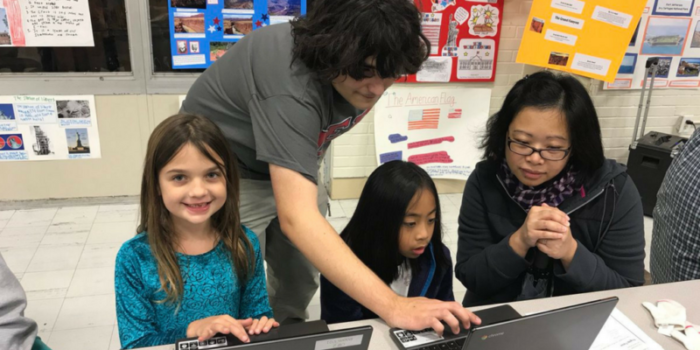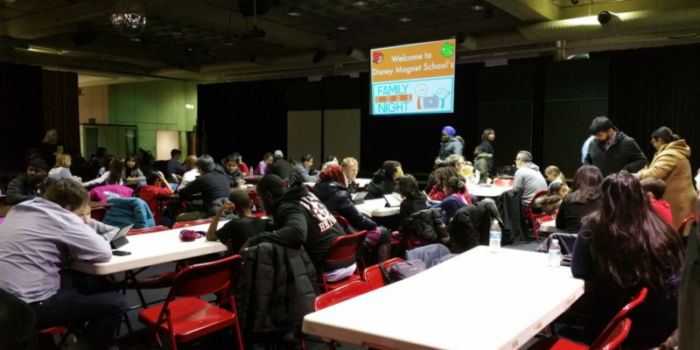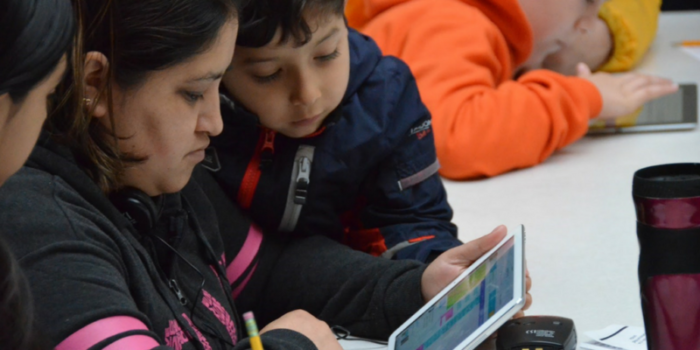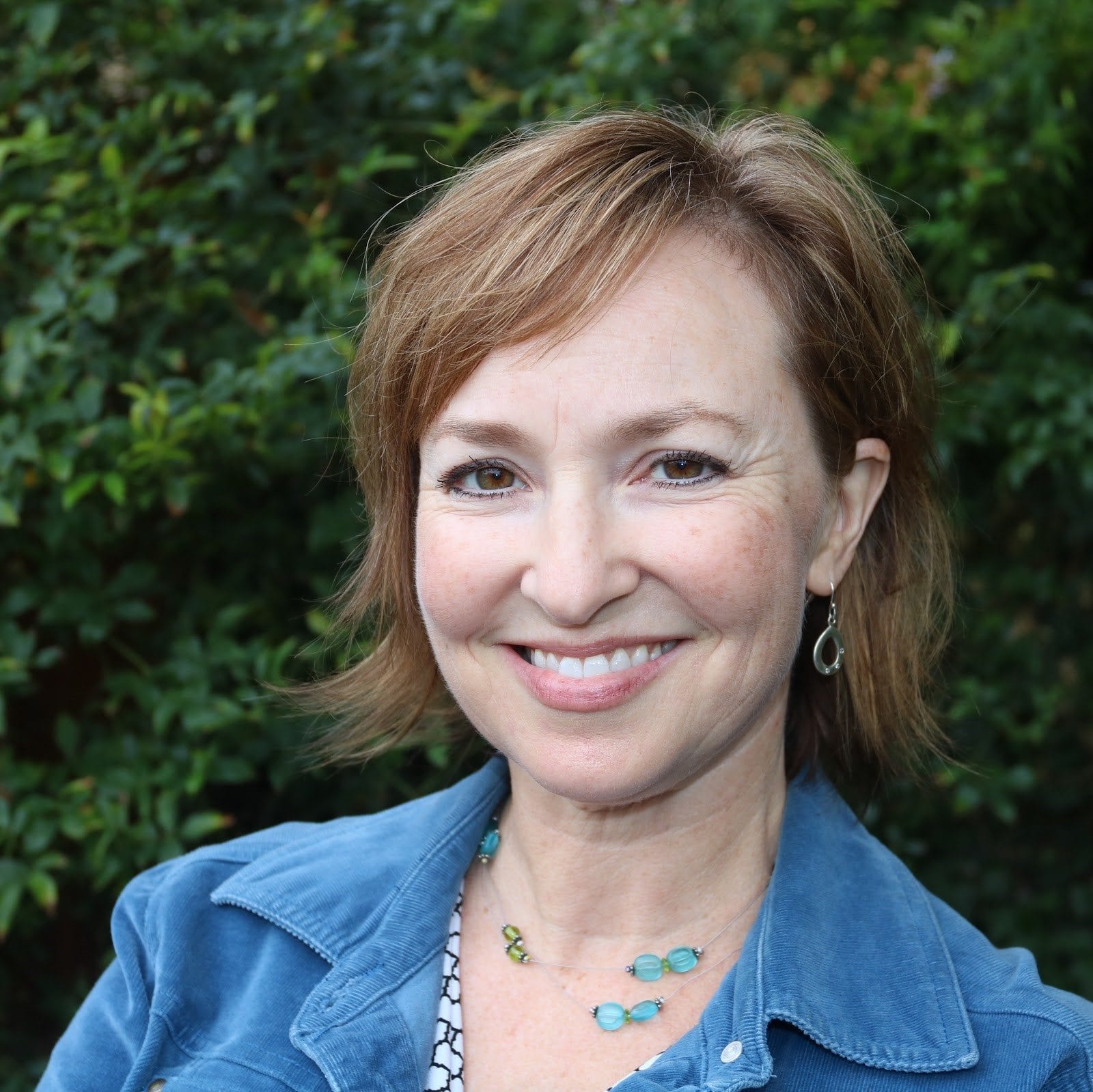Computer Science Education Week aims to inspire K-12 students in computer science. Held the second week of December in honor of the birthday of Admiral Grace Murray Hopper, who was a pioneer in computing, Computer Science Education Week generates interest for computer science and draws attention to broadening participation across race, class, and gender.
Hour of Code™ is the star attraction for Computer Science Education Week, with Code.org® serving as lead organizer. Leveraging cross-sector partnerships, Hour of Code™ has become a global movement that offers tutorials for every age and experience level. In 2017 more than ten million students in over 180 countries participated.
Many youth who experience their Hour of Code™ do so at school. This means that one of the major influencers on a child’s learning–their family–is missing from our efforts. Research shows that families have a significant impact on their children’s academic interests and outcomes and, especially for girls, often play a critical role in sparking their interest in coding and computer science.
Imagine if family engagement was deeply tapped into during Hour of Code™ and Computer Science Education Week. Family Code Night was developed by Executive Director, John Pearce, to include parents in sustaining children’s learning and passion for computer science. Pearce shares, “To truly overcome the digital divide we must do so in the K-5 years and in this effort we must engage the most powerful influence of K-5 children’s self-belief: parents and family.”

Photo Credit: Family Code Night
Expertise, resources, prior experience, expectations. These factors can hold back schools from believing they can host a Family Code Night. Pearce works to circumvent these real limitations and override perceived barriers in order to bring family-engaging computer science education to elementary schools and youth organizations, especially those in underserved communities.
“There’s really just one big thing we want to teach you this evening: you can do this! Coding and computer science are fun. You can learn to program, and we’ll start tonight!” Every Family Code Night starts with this message to youth and parents.

Photo Credit: Family Code Night
Pearce has set up a program model so that Family Code Night can be hosted by nearly any elementary school or youth organization, using a free Event Kit that leads an “Organizer” and a “Presenter” through each step needed to plan and conduct the hour-plus evening event. No coding experience is needed. Parent-child pairs using their own or provided devices watch a quick introduction, then complete game-like puzzles from Code.org®‘s Hour of Code™. The puzzles are not a race or a competitive hackathon, but are rather self-paced so families can go as fast or slow as they like, and can continue with the puzzles at home. The Presenter uses the script provided to enhance the puzzles with bursts of guided learning of basic computer science concepts, through activities that are fun, engaging, and informative.
Here are takeaways from Family Code Night that aim to introduce the basics of coding and keep the momentum going at home. With these ideas, educators and parents can bring coding to schools, libraries, community centers, and youth-serving organizations.
- Instruct kids and parents together.This requires planning and social engineering to get it right. Family Code Night promotes practices like trading the keyboard back and forth between puzzles to help kids and parents both take active roles in learning to code. Parents get to see how their child can learn to code and, even for parents who have never coded before, are empowered in how they can help support their child’s engagement in computer science.
- Start early. Pearce is a fervent advocate for starting coding in grades K-5, before the digital divide has taken root. By making computer science accessible and intuitive for kids from kindergarten on, they will believe that they can create with code. It’s often easier to inspire a child at a young age than it is to undo misperceptions about computer science or overcome lack of confidence. For kids who are starting a little bit older, it’s best to try to align coding with other activities that are already of interest – whether it involves a favorite movie character, fashion, or social justice topic.
- Send families off with activities that they continue at home. Families go home with a Code On At Home flyer that has 40+ hours of games. Families return to the same URL– the same start page– and pick up exactly where they left off on puzzles for their first Code On At Home activity. After that, families can continue coding with resources from Code.org’s Hours of Code, Google’s Made With Code, MIT’s Scratch, and NCWIT’s family tips to encourage girls in computing.

Photo Credit: Family Code Night
We give a shout out to John Pearce and his passion and leadership in starting up Family Code Night and his efforts in mobilizing a cadre of partners and volunteers around the country who are elevating family engagement in computer science.
As Family Code Night iterates and expands its reach, we offer some food for thought for broadening the participation of computer science through family engagement.
Dive deep into how we recruit at the family level. Along with considering how to get schools or organizations on board for coding workshops for families, it’s imperative to engage families who may have the most to gain but may also be reluctant to sign up. Targeted outreach is critical in order to bridge the digital divide. Flyers and emails may work for some, but personal invitations from trusted persons may be needed for others. When and where do we host workshops? Rather than make assumptions, gather input from families to meet their needs.
Design initiatives with underrepresented and underserved communities in mind. The test bed for Family Code Night is in Mill Valley, CA, where the population is predominantly White and the median household income is over $140,000. Given that Blacks and Latinos are drastically underrepresented in the fields of engineering and computer science, there is value in designing a program from the ground up for families with less access to computer science resources in their schools and communities. To build interest and capacity in underserved communities, programs can benefit from starting with insights of families from these communities in the design phase rather than inviting their feedback on programs already developed. You can learn how coding can be made accessible to English-language learning families in this case study. There are helpful, free resources available for using a human-centered design approach to create programs from IDEO.org.
Invest in understanding how we can do more and better to support learning after our family workshops at home. There is an abundance of computer science resources for families. This wealth of resources is both an opportunity and a challenge. Video games, afterschool programs, online tutorials, summer camps, and fiction books. The list is endless with opportunities for parents to support their kids’ engagement in computer science. But how do parents navigate through the myriad of resources and decide which are best for their child? How can we curate resources and package them into personalized, actionable form for families who are just getting started? We don’t have the answer to this one yet, but we know that families need and want our support to find the right resources.
Before we begin planning our next Hour of Code™ let’s make family engagement a cornerstone for setting goals and measuring success. And most important, let’s leverage resources and share lessons learned so that collectively we reduce the digital divide with our programs for families.

Linda Kekelis, PhD, is a consultant with a longstanding commitment for ensuring that all youth, particularly girls and youth of color, have access to STEM opportunities. Family engagement has been at the center of the research and programs Linda has led. She is an advisor at STEM Next Opportunity Fund. lkekelis@gmail.com @LindaKekelis

Kara Sammet, PhD, is an inclusion strategist and founder of Gender Lenz, a consulting firm that supports investors, philantropists and corporate social responsibility leaders to leverage inclusion to transform the world. She is an advisor at STEM Next Opportunity Fund. @karasammet

